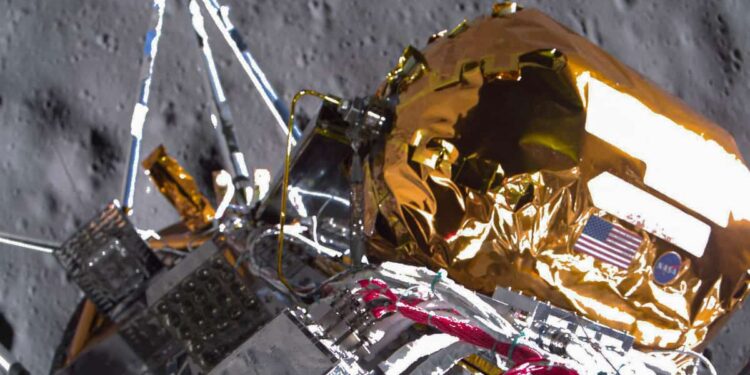Its mission on the lunar surface was to last around seven days, but will probably be shortened: the American company Intuitive Machines declared Tuesday morning that the batteries of its lunar lander, named Odysseus, would only last between 10 and 20 additional hours.
• Read also: The American probe Odysseus sends its first images of the south of the Moon
• Read also: Odysseus probe: humanity has “a lot of things” to learn about the Moon to be able to go to Mars
Last Thursday, Odysseus became the first private probe to land on the Moon, and the first American spacecraft to do so since the end of the Apollo program, more than 50 years ago.
But instead of landing upright on all six feet, Odysseus, who is more than four meters tall, likely rolled over, ending up lying on one side, according to company analysis.
On Monday, Intuitive Machines said it would continue to recover data “until the lander’s solar panels are no longer exposed to light.”
“Given the position of the Earth and the Moon, we believe that flight controllers will continue to communicate with Odysseus until Tuesday morning,” she added.
Then, on Tuesday morning, the company published a new message, indicating that the lander’s batteries could perhaps still last “up to 10-20 additional hours.” She said she is working to determine the exact moment of their end of life.
Initially, the probe’s ground operations were expected to last about seven days, before night settled over the lunar south pole.
Odysseus is the probe that landed furthest south on the Moon.
The Apollo missions landed closer to the equator. But NASA wants to explore the lunar south pole, before sending its astronauts there as part of its Artemis missions.
That’s why it contracts with companies, including Intuitive Machines, to transport scientific instruments there.
On Tuesday, “Odysseus efficiently transmitted scientific data” from its cargoes, Intuitive Machines said.
The company also published a new photo taken by the probe, about 30 meters above the ground, before its moon landing.
The Japanese SLIM probe landed on the Moon at the end of January, also sideways. Japan’s Jaxa space agency announced Monday that it had reignited after surviving two weeks of harsh lunar night.



